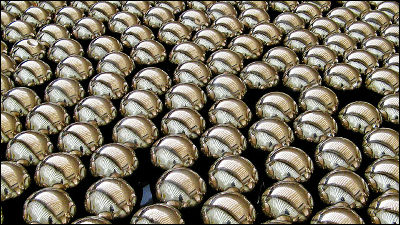A water disinfection method that is more than 10 million times more effective than before is developed, and it can be carried out on the spot using oxygen in the air.

An international team of researchers from the United Kingdom, the United States, and Singapore has developed 'a method of disinfecting polluted water on the spot using oxygen in the air.' This method kills bacteria more than 10 million times more efficiently than traditional water disinfection methods and has the potential to revolutionize water disinfection technology in areas where access to safe water is lacking. ..
A residue-free approach to water disinfection using catalytic in situ generation of reactive oxygen species | Nature Catalysis
Instant water cleaning method'millions of times' better than commercial approach --News --Cardiff University
https://www.cardiff.ac.uk/news/view/2530949-instant-water-cleaning-method-millions-of-times-better-than-commercial-approach
Instant water disinfectant'millions of times more effective' than commercial purification --UPI.com
https://www.upi.com/Science_News/2021/07/01/wales-instant-water-disinfectant/7311625156929/
Securing clean water is important for human life, but UNICEF estimates that as of 2017, 2.2 billion people had no access to safely managed water and 785 million were from home. It is said that it uses water from a distant place, water that may be contaminated, or water drawn directly from the water source.
A common method of purifying water is chlorine disinfection using chlorine , which has a strong bleaching and bactericidal action. However, chlorine is known to react with the natural components of water to produce disinfection by-products such as trihalomethanes , which can have harmful effects on the human body at high doses.
Another method is disinfection using hydrogen peroxide. Hydrogen peroxide not only functions as a high-level disinfectant, but is also decomposed into water without leaving any by-products, and has little adverse effect on the human body. However, hydrogen peroxide produced at the factory is said to be less effective as a disinfectant than chlorine disinfection because a stabilizer is added during transportation and storage.

Therefore, the research team developed a method to instantly generate hydrogen peroxide by reacting oxygen in the air with hydrogen contained in water by using a catalyst made of
Tests have shown that a newly developed method produces hydrogen peroxide from hydrogen and oxygen, as well as a compound known as reactive oxygen species, which plays a major role in disinfecting water. It was also found that it was fulfilling. It has also been shown that catalyst-based disinfection methods kill E. coli more than 10 million times more efficiently than hydrogen peroxide tested under equivalent conditions and more than 100 million times more efficiently than chlorine disinfection. It was said that it was done.
'We now add contaminated water and electricity in addition to the catalyst is the only step needed to achieve disinfection,' said Graham Hutchings, a professor at Cardiff University , who co-authored the paper. I proved that. ' 'This approach may underpin alternative technologies in water disinfection methods, especially in communities that lack access to existing water purification methods and drinking water,' the research team said.

Related Posts:
in Science, Posted by log1h_ik







